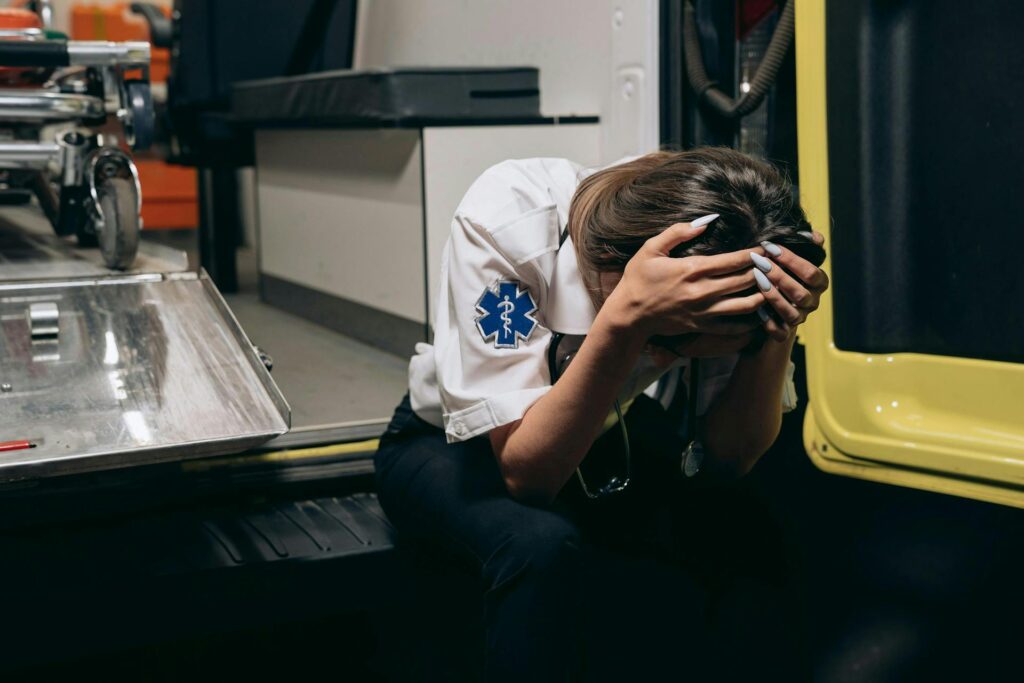Understanding PTSD
Post-Traumatic Stress Disorder (PTSD) is a mental health condition triggered by experiencing or witnessing a terrifying event. It’s crucial to understand that PTSD is not simply “stress” or a temporary feeling; it’s a complex disorder that can significantly impact a person’s life. While it’s natural to experience emotional distress after a traumatic event, PTSD develops when these reactions persist and interfere with daily functioning for an extended period.
The development of PTSD is not a sign of weakness. It’s a biological and psychological response to extreme stress, involving changes in brain chemistry and function. Traumatic events that can lead to PTSD include, but are not limited to, combat exposure, physical or sexual assault, natural disasters, serious accidents, and witnessing violence. The severity and duration of the trauma, as well as individual vulnerability factors, play a role in whether a person develops PTSD.
Understanding the core components of PTSD involves recognizing that it’s a disorder of memory, emotion, and physiological arousal. The traumatic event is not processed like typical memories; instead, it’s often fragmented and stored with intense emotional and sensory details. This can lead to intrusive memories, flashbacks, and nightmares, where the person relives the trauma as if it were happening again.
A key aspect of PTSD is the experience of hyperarousal. This involves a heightened state of alertness and reactivity, leading to symptoms like irritability, difficulty sleeping, and being easily startled. Individuals with PTSD often feel constantly on guard, anticipating danger even when there is none. This hypervigilance can significantly impact their ability to relax and engage in everyday activities.
Avoidance is another significant element of PTSD. Individuals may avoid places, people, or activities that remind them of the trauma. This avoidance can lead to social isolation, as individuals withdraw from relationships and activities they once enjoyed. Emotional numbing is also common, where individuals feel detached from their emotions and struggle to experience joy or sadness.
It’s important to recognize that PTSD can manifest differently in each person. Some individuals may develop symptoms immediately after the traumatic event, while others may experience a delayed onset, sometimes months or even years later. The course of PTSD also varies, with some individuals experiencing chronic symptoms and others experiencing periods of remission and relapse.
Additionally, the impact of PTSD extends beyond the individual, affecting families, relationships, and work performance. Understanding the disorder involves recognizing the ripple effects of trauma and the importance of providing support and resources to those affected. Education and awareness are essential in reducing stigma and promoting early intervention.
Finally, understanding PTSD involves recognizing its treatability. Effective therapies and support systems are available to help individuals manage their symptoms and improve their quality of life. By fostering a compassionate and informed understanding of PTSD, we can create a more supportive environment for those who have experienced trauma.
Connect Free. Improve your mental and physical health with a professional near you

PTSD Symptoms
The symptoms of Post-Traumatic Stress Disorder (PTSD) can be debilitating, affecting various aspects of an individual’s life. Recognizing these symptoms is crucial for early intervention and effective treatment. PTSD symptoms are typically categorized into four main clusters: intrusion, avoidance, negative changes in cognition and mood, and changes in arousal and reactivity.
Intrusion symptoms involve reliving the traumatic event through distressing memories, flashbacks, and nightmares. Flashbacks can be particularly intense, causing individuals to feel as though they are re-experiencing the trauma in the present moment. These intrusive thoughts and images can be triggered by seemingly innocuous stimuli, such as a sound, smell, or sight that reminds them of the event.
Avoidance symptoms involve efforts to avoid thoughts, feelings, places, people, or activities that remind the individual of the trauma. This avoidance can lead to social isolation, as individuals withdraw from relationships and activities they once enjoyed. They may avoid talking about the event or seeking help, further compounding their distress.
Negative changes in cognition and mood include persistent negative beliefs about oneself, others, or the world. Individuals may experience feelings of detachment, estrangement, or emotional numbing. They may struggle to experience positive emotions and may lose interest in activities they once enjoyed. Guilt, shame, and self-blame are also common, contributing to a sense of hopelessness and despair.
Changes in arousal and reactivity manifest as hypervigilance, irritability, and difficulty sleeping. Individuals may be easily startled, constantly on guard, and prone to angry outbursts. These symptoms can significantly impact their ability to function in daily life and maintain healthy relationships. Difficulty concentrating and memory problems are also common.
The severity and duration of PTSD symptoms can vary widely. Some individuals may experience mild symptoms that resolve over time, while others may experience chronic and debilitating symptoms that persist for years. The impact of PTSD symptoms can also extend beyond the individual, affecting their relationships, work performance, and overall quality of life.
It’s important to recognize that not everyone who experiences trauma will develop PTSD. However, if symptoms persist for more than a month and interfere with daily functioning, it’s crucial to seek professional help. Early intervention can significantly improve outcomes and prevent the development of chronic PTSD.
In addition to the core symptom clusters, individuals with PTSD may also experience physical symptoms such as headaches, stomachaches, and muscle tension. They may also be at increased risk for developing other mental health conditions, such as depression, anxiety disorders, and substance use disorders. Recognizing and addressing these co-occurring conditions is essential for comprehensive treatment.
Understanding the diverse range of PTSD symptoms is crucial for providing effective support and treatment. By recognizing the signs and symptoms of PTSD, we can help individuals access the resources they need to heal and recover.
The Brain and PTSD
Post-Traumatic Stress Disorder (PTSD) is not merely a psychological condition; it involves significant changes in brain structure and function. Understanding the neural impact of trauma is crucial for developing effective treatments and interventions. The brain’s response to trauma involves complex interactions between various regions, including the amygdala, hippocampus, and prefrontal cortex.
The amygdala, responsible for processing emotions, particularly fear, becomes hyperactive in individuals with PTSD. This heightened activity contributes to the intense emotional reactions and hyperarousal experienced by those with the disorder. The amygdala’s increased sensitivity to threat cues leads to an exaggerated fear response, even in situations that are not objectively dangerous.
The hippocampus, a brain region crucial for memory formation, is often compromised in individuals with PTSD. Chronic stress and trauma can lead to a reduction in hippocampal volume, impairing the ability to form and retrieve memories. This can result in fragmented and intrusive memories of the traumatic event, as well as difficulties with everyday memory and learning.
The prefrontal cortex, responsible for executive functions such as decision-making, emotional regulation, and impulse control, is also affected by trauma. In individuals with PTSD, the prefrontal cortex may exhibit reduced activity, leading to difficulties in managing emotions and controlling impulses. This can contribute to symptoms like irritability, anger outbursts, and difficulty concentrating.
The hypothalamic-pituitary-adrenal (HPA) axis, the body’s stress response system, is also dysregulated in PTSD. Chronic stress leads to an overproduction of stress hormones, such as cortisol, which can have detrimental effects on the brain and body. This dysregulation contributes to the persistent hyperarousal and physical symptoms experienced by individuals with PTSD.
Neuroimaging studies, such as MRI and PET scans, have provided valuable insights into the neural correlates of PTSD. These studies have revealed structural and functional differences in the brains of individuals with PTSD compared to those without the disorder. These findings have helped to validate the biological basis of PTSD and have informed the development of targeted treatments.
Neuroplasticity, the brain’s ability to reorganize itself by forming new neural connections, plays a crucial role in recovery from PTSD. Therapies such as cognitive processing therapy (CPT) and prolonged exposure (PE) therapy can help to promote neuroplasticity by facilitating the processing of traumatic memories and reducing fear responses.
Understanding the brain’s role in PTSD highlights the importance of addressing both the psychological and biological aspects of the disorder. A comprehensive approach to treatment should include therapies that target the neural circuits involved in fear, memory, and emotional regulation. By recognizing the neural impact of trauma, we can develop more effective interventions to help individuals heal and recover from PTSD.
PTSD Treatment Options
Post-Traumatic Stress Disorder (PTSD) is a treatable condition, and various therapeutic interventions can help individuals manage their symptoms and improve their quality of life. Effective treatment options typically involve a combination of psychotherapy and, in some cases, medication.
Psychotherapy, also known as talk therapy, is a cornerstone of PTSD treatment. Several evidence-based therapies have been shown to be effective in reducing PTSD symptoms. Cognitive Processing Therapy (CPT) helps individuals challenge and change negative thoughts and beliefs related to the trauma. It involves identifying and modifying distorted thinking patterns that contribute to emotional distress.
Prolonged Exposure (PE) therapy involves gradually exposing individuals to trauma-related memories, feelings, and situations. This exposure helps to reduce fear responses and promote emotional processing of the traumatic event. PE therapy is conducted in a safe and controlled environment, with the guidance of a trained therapist.
Eye Movement Desensitization and Reprocessing (EMDR) therapy is another effective treatment for PTSD. It involves having individuals recall traumatic memories while performing bilateral eye movements or other forms of bilateral stimulation. This process helps to facilitate the processing of traumatic memories and reduce their emotional impact.
In addition to these evidence-based therapies, other forms of psychotherapy, such as group therapy and family therapy, can also be beneficial.
Group therapy provides a supportive environment for individuals to share their experiences and learn from others who have experienced similar trauma. Family therapy can help to improve communication and support within the family system, which can be essential for recovery.
Medication can also play a role in PTSD treatment, particularly for individuals experiencing severe symptoms or co-occurring mental health conditions. Antidepressants, such as selective serotonin reuptake inhibitors (SSRIs) and serotonin-norepinephrine reuptake inhibitors (SNRIs), are commonly prescribed to help manage symptoms of depression, anxiety, and irritability.
Prazosin, an alpha-1 adrenergic antagonist, may be prescribed to help reduce nightmares and improve sleep. Anti-anxiety medications, such as benzodiazepines, are generally not recommended for long-term use due to the risk of dependence and potential for worsening PTSD symptoms.
It’s essential to work with a qualified mental health professional to develop an individualized treatment plan that addresses the specific needs and preferences of each individual. A comprehensive treatment approach may involve a combination of psychotherapy, medication, and supportive services.
In addition to formal treatment, self-care strategies can also play a crucial role in managing PTSD symptoms. These strategies may include practicing relaxation techniques, engaging in regular exercise, maintaining a healthy diet, and getting adequate sleep. Building a strong support system of friends, family, and community resources can also be essential for recovery.
Early intervention is crucial for improving outcomes and preventing the development of chronic PTSD. By accessing effective treatment options and engaging in self-care strategies, individuals with PTSD can experience significant improvements in their symptoms and quality of life.

Free consultations. Connect free with local health professionals near you.
Conclusion
Post-Traumatic Stress Disorder (PTSD) presents a complex and often debilitating challenge, impacting individuals on multiple levels – emotionally, cognitively, and physiologically. As we’ve explored, understanding PTSD involves recognizing its origins in traumatic experiences, the diverse array of symptoms it manifests, the neurological changes it induces, and the range of effective treatment options available. It is not a monolithic experience, and its effects can vary significantly from person to person.
The journey to healing from PTSD is not a linear one. It requires patience, persistence, and a commitment to self-care. The process of confronting and processing traumatic memories can be emotionally taxing, but it is essential for reclaiming a sense of control and safety. Effective therapies, such as Cognitive Processing Therapy (CPT), Prolonged Exposure (PE), and Eye Movement Desensitization and Reprocessing (EMDR), provide structured frameworks for this process, empowering individuals to challenge distorted beliefs, manage fear responses, and integrate traumatic experiences into their life narrative.
Beyond formal therapy, fostering a supportive environment is crucial. Family, friends, and support groups can provide invaluable emotional support, reducing feelings of isolation and validating the individual’s experiences. Building a strong support network can help individuals feel less alone and more understood, which can significantly enhance the healing process.
The neurological insights gained through neuroimaging studies highlight the biological basis of PTSD, emphasizing that it is not a matter of willpower or emotional weakness. Understanding the neural changes associated with PTSD can help individuals and their loved ones approach the disorder with greater empathy and compassion. It also underscores the importance of interventions that target the brain’s plasticity, promoting neural reorganization and recovery.
Medication, while not a standalone solution, can play a vital role in managing specific symptoms, such as depression, anxiety, and sleep disturbances. However, it is essential to work closely with a healthcare professional to develop a personalized medication plan and monitor for potential side effects.
Self-care strategies are equally important in the healing process. Regular exercise, a balanced diet, adequate sleep, and mindfulness practices can help regulate the nervous system and promote overall well-being. Engaging in activities that bring joy and relaxation, such as hobbies, creative pursuits, or spending time in nature, can also contribute to emotional resilience.
Ultimately, the goal of PTSD treatment is not to erase the traumatic experience but to help individuals integrate it into their lives in a way that does not define them. It is about reclaiming a sense of agency, rebuilding a sense of safety, and fostering a renewed sense of hope. Resilience is not the absence of pain; it is the ability to navigate through adversity and emerge stronger.
By fostering a compassionate and informed understanding of PTSD, we can create a more supportive and inclusive society for those who have experienced trauma. We can promote early intervention, reduce stigma, and empower individuals to seek the help they need. The path to healing may be challenging, but it is possible, and with the right support and resources, individuals with PTSD can lead fulfilling and meaningful lives.
Time to feel better. Find a mental, physical health expert that works for you.
Common FAQs:
What is the difference between normal stress after a traumatic event and PTSD?
It’s normal to experience distress after trauma. PTSD develops when those symptoms persist for more than a month and significantly interfere with daily life. Normal stress reactions usually diminish over time, while PTSD symptoms can intensify without intervention.
Can anyone develop PTSD after a traumatic event?
Not everyone who experiences trauma develops PTSD. Several factors influence susceptibility, including the severity of the trauma, individual resilience, support systems, and pre-existing mental health conditions.
What are the main symptoms of PTSD?
The main symptom categories are: intrusion (flashbacks, nightmares), avoidance (avoiding reminders of the trauma), negative changes in cognition and mood (negative beliefs, emotional numbing), and changes in arousal and reactivity (hypervigilance, irritability).
How long does PTSD last?
The duration of PTSD varies. Some people experience symptoms for a few months, while others have chronic symptoms that last for years. With proper treatment, many individuals experience significant improvement.
Is PTSD treatable?
Yes, PTSD is treatable. Effective therapies include Cognitive Processing Therapy (CPT), Prolonged Exposure (PE), and Eye Movement Desensitization and Reprocessing 1 (EMDR). Medication can also help manage symptoms.
Can children develop PTSD?
Yes, children can develop PTSD. Symptoms may manifest differently in children, such as regressive behaviors, separation anxiety, or acting out.
What is a flashback?
A flashback is a vivid and distressing re-experiencing of the traumatic event, where the person feels as though they are reliving it in the present moment.
Does medication cure PTSD?
Medication can help manage PTSD symptoms, but it is not a cure. It is often used in conjunction with psychotherapy for optimal results.
How can I support someone with PTSD?
Be patient, listen without judgment, offer practical support, and encourage them to seek professional help. Avoid pressuring them to talk about the trauma if they are not ready.
Are there any self-help strategies for PTSD?
Yes, self-care strategies like regular exercise, healthy eating, adequate sleep, and mindfulness can help manage symptoms. Building a support network and engaging in enjoyable activities are also beneficial.
Is there a link between PTSD and substance abuse?
Yes, individuals with PTSD are at increased risk for substance abuse as a way to cope with symptoms.
Where can I find help for PTSD?
You can seek help from mental health professionals, therapists specializing in trauma, community mental health centers, and support groups. Online resources and hotlines are also available.
NOTICE TO USERS
MindBodyToday is not intended to be a substitute for professional advice, diagnosis, medical treatment, or therapy. Always seek the advice of your physician or qualified mental health provider with any questions you may have regarding any mental health symptom or medical condition. Never disregard professional psychological or medical advice nor delay in seeking professional advice or treatment because of something you have read on MindBodyToday.
Share this article

Let us know about your needs so we can answer any of your questions.

Fast and easy to understand quote

We come fully prepared.Hire when ready.
Popular Professionals Near You
You might also like
Emotional Intelligence
, What is Emotional Intelligence? Everything you need to know Find a Pro Emotional Intelligence: Origins The ascent of emotional […]
All About Emotional Contagion
, All About Emotional Contagion FIND LICENSE A PROFESSION Emotional Resonance in Relationships Emotional resonance, a profound and often subconscious […]
All About Emotional Abuse
, All About Emotional Abuse Find a license Pro Recognizing and Overcoming Emotional Abuse Emotional abuse, a silent epidemic, infiltrates […]





